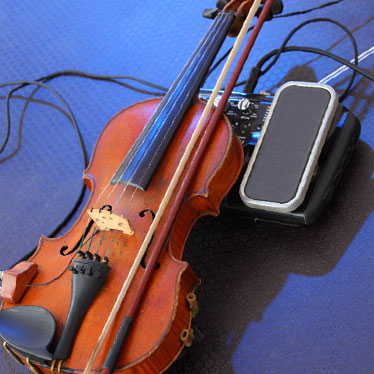How To Choose The Right Pickup For You

Classically-trained string players - particularly those playing violin and viola - can have a difficult time getting used to the idea of sounding louder and often shy away from the idea of amplifying their sound.
However, amplifying your sound is exactly what you'll need to do if you begin performing across the musical genres - rock, jazz, country, etc. Pickups are also helpful for student string players who are participating with their school's marching band. And, even some orchestral players find it's nice to have amplification options depending on the performance piece, venue and environment.
How Does a Pickup Work?
A pickup continues where the body of your instrument leaves off, harnessing the vibrations it picks up and translating them into a digital format, which is then translated again via sound equipment.
You can read, What is a Violin Pickup... for more information about the topic.
What Do You Want From Your Pickup?
There are a wide range of pickups available for violin and viola players, but the ultimate decision will be based on what you want your pickup to do for you as a soloist or collaborative musician.
Permanent Pickups
These pickups are integrated into the body of your violin, similar to a pickup on a guitar, so you can plug into - and out of - sound equipment quickly. However, most violinists find they want something less permanent, that can be added when desired and then removed for classical and orchestral playing, which is where temporary versions of pickups come into play.
Temporary Pickups
Temporary pickups come in a variety of options, including:
- Easy fit pickups. While affordable and easy to take on and off, we don't recommend east fit pickups because they severely diminish your instrument's tone.
- Bridge-mounted pickups. These can be a good option for beginner players who aren't sure if they'll be using pickups on a more permanent basis and can't yet afford higher-quality options. Bridge-mounted pickups clip on to the side of the bridge or under the bridge's wing-slot.
- Under-the-bridge pickups. These sound clips read off of the top plate, at the base of the bridge, without damaging the instrument. By reading the vibrations off the top of the plate, rather than exclusively from the bridge, the transducer transmits a very clear, high-fidelity sound. It's like hearing the sound of your voice via amplification directly from the vocal chords, rather than from the exterior of the throat and neck.
- Clip-on microphones. The good news is that high-quality, clip-on mics have the ability to produce great sound. The bad news is that they must be very precisely mounted to do so and any slip or movement that affects the mics location or angle will result in instantly poor-quality sound. Also, they're prone to producing feedback in loud settings, so these clip-on mics are a gamble.
- Contact microphones. A cross between a removable clip-on mic and a pickup, contact microphones can be a solution. However, as with clip-on microphones, placement is essential for good sound, and feedback presents a potential problem.
When all is said and done, most serious violinists and violists find it makes sense to invest a little more in a high-quality under-the-bridge pickup for the best overall tone and impeccable, trustworthy sound they can count on whenever they need it.
The Realist Violin SoundClip is Unrivaled for Quality
The innovative engineers at Realist knew that violinists and violists were sacrificing the quality of their sound in order to use a pickup that was easy to get on and off. The Violin SoundClip is their solution. This sound clip only takes seconds to get on and off, and it works with every size of violin and viola. There is also a Realist SoundClip for cello and bass.
Best of all, the innovative Realist acoustic transducer is unrivaled when it comes to quality, transparency, and tonal fidelity. It amplifies the organic luster of the instrument's sound, and doesn't require any adjustment on the part of the musician to tailor playing style to accommodate for the pickup. The Realist Violin SoundClip also has an on-board volume knob, so players have ultimate control over their volume levels in real-time.
The SoundClip's delicate clamp means it can be quickly secured, and removed, without risk of damaging the body of the instrument in any way. It also includes a variable weight system to help contour tone and the pickup can be adapted to all playing situations.
Begin Playing With Sound in a Whole New Way
From the ability to stand your ground with louder brass or electric instruments and producing professional-grade recordings, to the option of modifying your violin or viola's sound on stage using a DI box and amps, violin pickups allow you to play with sound in a whole different way.
Invest in a Realist Violin SoundClip or other high-quality product and you'll expand both live and recorded performance possibilities.


